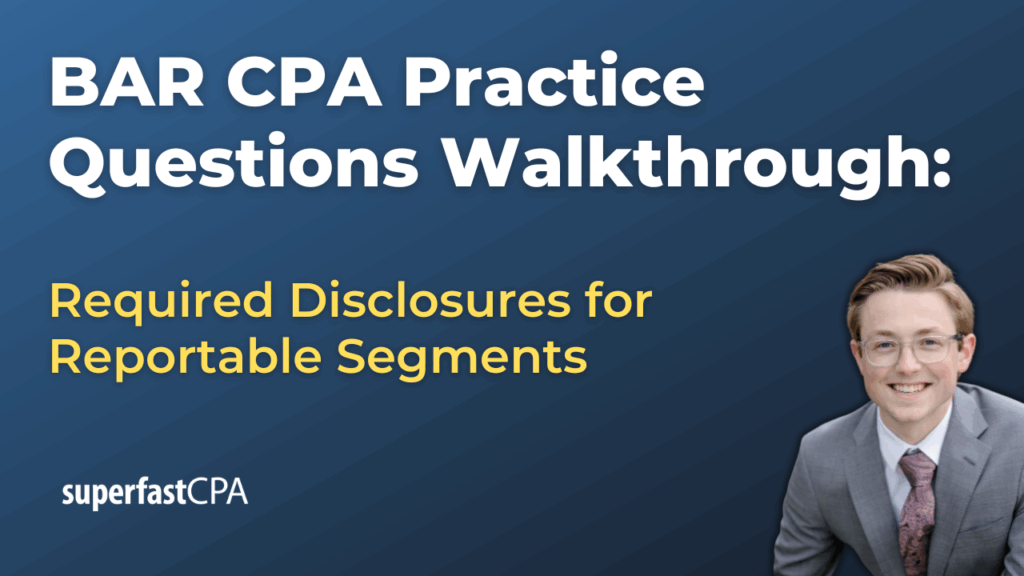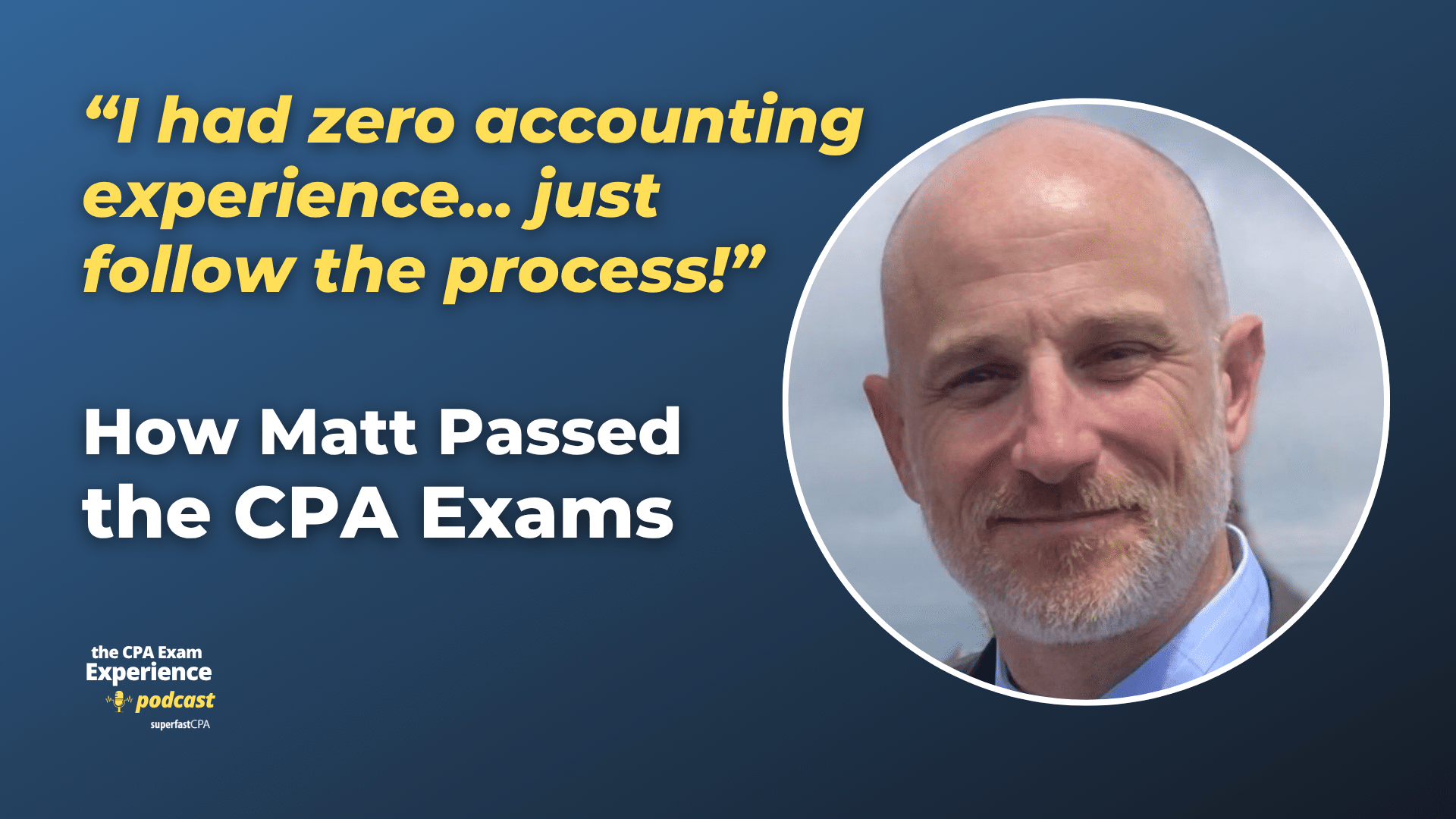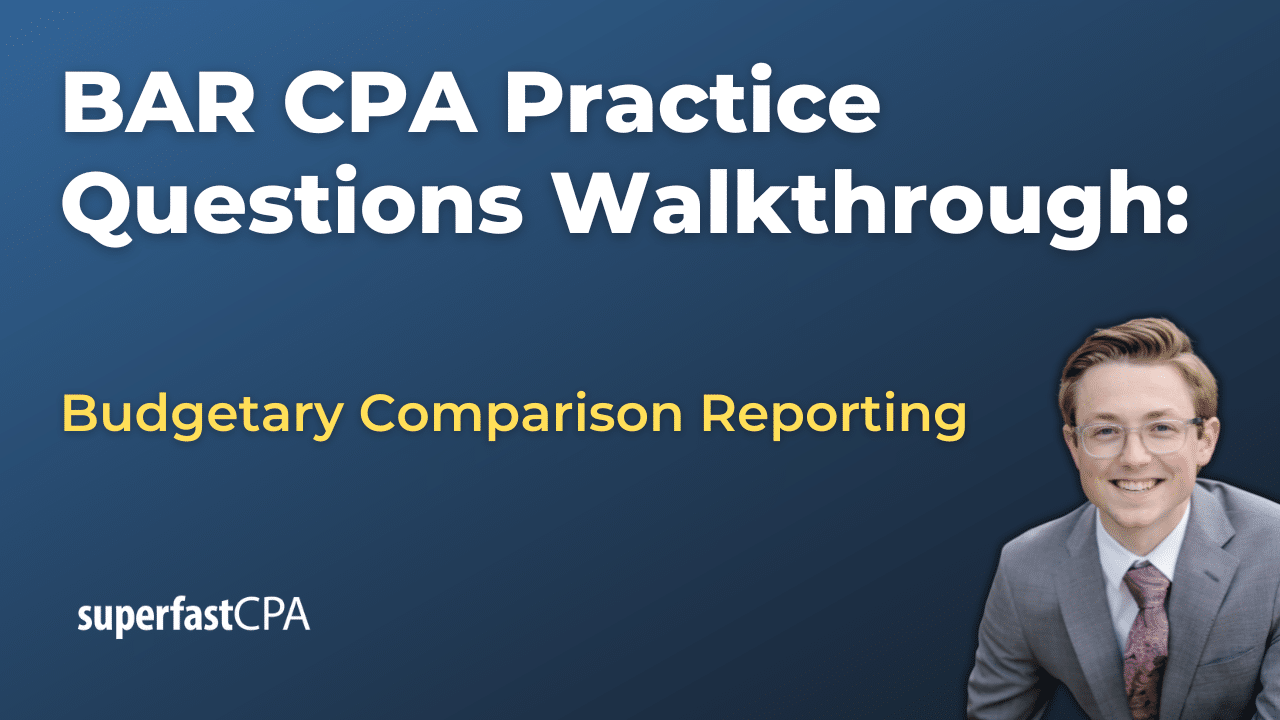In this video, we walk through 5 BAR practice questions teaching about required disclosures for reportable segments. These questions are from BAR content area 2 on the AICPA CPA exam blueprints: Technical Accounting and Reporting
The best way to use this video is to pause each time we get to a new question in the video, and then make your own attempt at the question before watching us go through it.
Also be sure to watch one of our free webinars on the 6 “key ingredients” to an extremely effective & efficient CPA study process here…
Required Disclosures for Reportable Segments
Segment reporting is designed to give financial statement users a clear view of how different parts of a business contribute to performance. Under U.S. GAAP (ASC 280), companies must disclose certain information about their reportable segments, based on the data provided to the chief operating decision maker (CODM).
Segment Profit or Loss and Total Assets
For each reportable segment, companies disclose profit or loss and total assets if those figures are regularly reviewed by the CODM. This allows users to see how management evaluates the performance of each segment.
Example: Suppose a company has three segments—Technology, Retail, and Logistics. If management reviews each segment’s profit and total assets separately, those amounts must be disclosed in the notes. If liabilities are tracked, they can be disclosed as well, but liabilities are considered encouraged, not required.
Segment Profit Measurement
A common exam trap is the assumption that segment profit must follow U.S. GAAP operating income. In reality, segment profit or loss is reported based on the measure the CODM uses internally. That might include or exclude certain items compared to GAAP.
Example: If management evaluates a segment using EBITDA (earnings before interest, taxes, depreciation, and amortization), that measure is what should be disclosed, not GAAP net income. The goal is to present results through the lens management uses to allocate resources and judge performance.
Major Customer Disclosures (The 10 Percent Rule)
Another high-yield requirement involves major customers. If revenues from a single external customer are 10 percent or more of total consolidated revenues, the company must disclose this fact, along with the total revenues from that customer and the segment or segments involved.
Example: If a manufacturing company has total revenues of 100 million and one customer provides 15 million, the notes must disclose that dependency. However, if two customers each provide 8 million (8 percent), no disclosure is required, because the threshold applies individually, not in the aggregate.
This rule highlights risks of revenue concentration, which is valuable to investors assessing business stability.
Entity-Wide Disclosures
Even companies with only one reportable segment are not exempt from additional disclosures. U.S. GAAP requires entity-wide information in three key areas:
- Revenues by product or service (or groups of similar products or services)
- Revenues by geography, split between the entity’s home country and foreign countries
- Long-lived assets by geography, domestic versus foreign
Example: A U.S.-based company with 50 million in U.S. sales and 20 million in international sales must disclose those figures. Likewise, if it has significant property in Canada, those foreign assets must be reported separately.
Why These Disclosures Matter
These requirements are not just compliance rules; they provide insights into a company’s structure, customer dependencies, and geographic diversity. Users of financial statements can better assess risk, profitability, and resource allocation decisions by reviewing segment disclosures.
For CPA exam candidates, focusing on the profit and assets disclosures, the customer 10 percent rule, the CODM’s profit measure, and entity-wide disclosures covers the most frequently tested areas.
Quick Recap of Key Facts
- Report profit or loss and total assets for each reportable segment if given to the CODM
- Segment profit is reported using the measure the CODM uses internally, not necessarily GAAP
- Disclose any single customer making up 10 percent or more of total revenues, along with the related segment or segments
- Entity-wide disclosures must cover revenues by product or service and by geography, plus long-lived assets by geography









